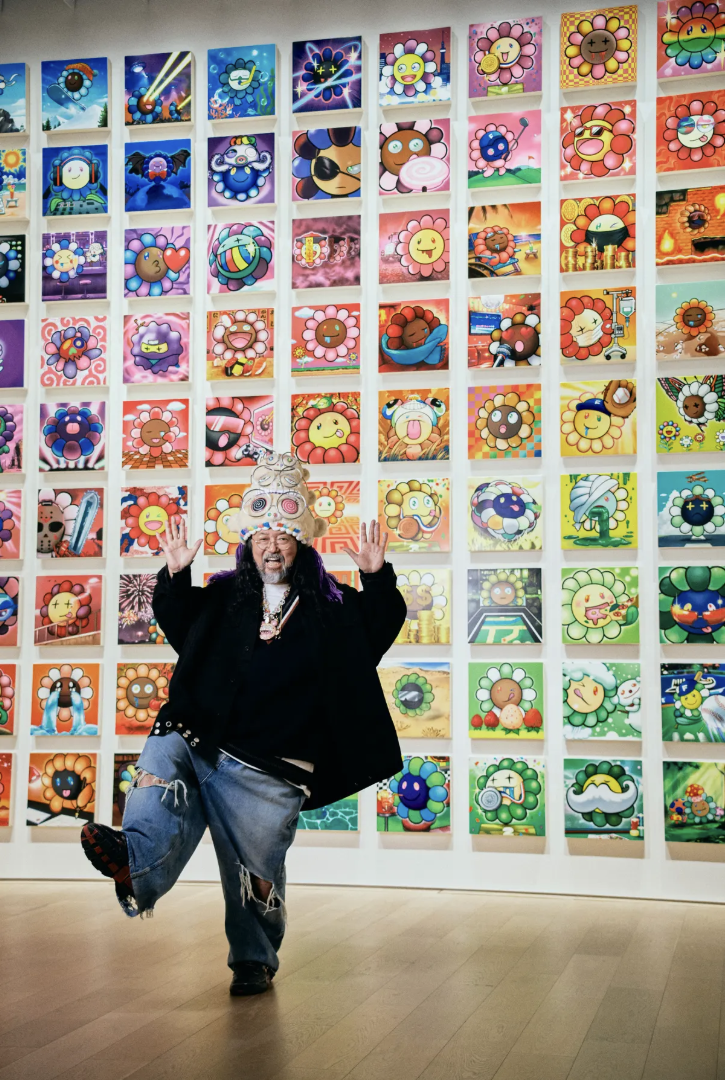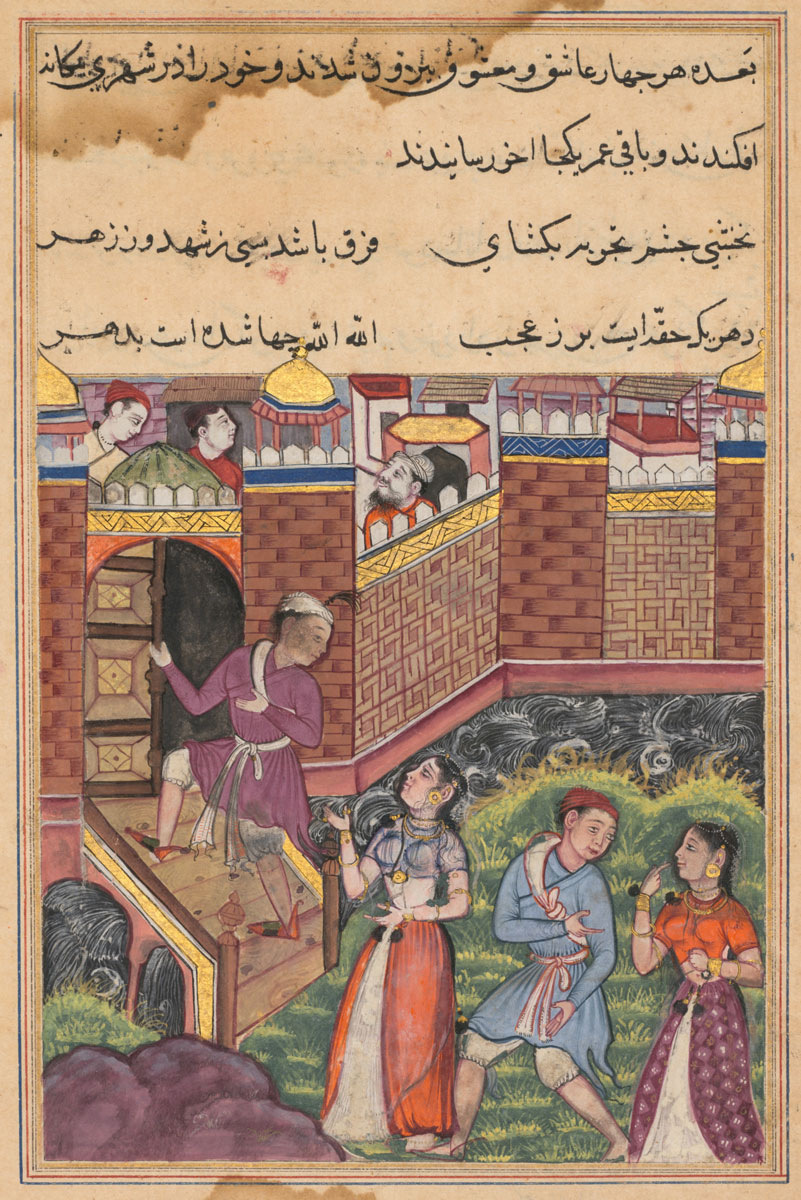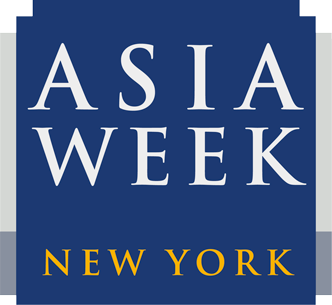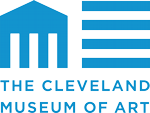
Photo by Shin Suzuki. © Takashi Murakami / Kaikai Kiki Co. Ltd. All rights reserved
Takashi Murakami: Stepping on the Tail of a Rainbow
May 25 – September 7, 2025
Member Preview Events: May 16–24, 2025 (reserve tickets)
Piano Cleveland: Kotaro Fukuma Sound Installation: July 29 from 12-1pm
Discover an incredible exhibition of works from a Japanese artist known for his unique style that examines the cultural energies of contemporary Japan—anime, manga, and the otaku culture that grew around these popular art forms—against the backdrop of Japanese traditions. Takashi Murakami uses his art to interpret historical events and their lasting effects, such as the end of World War II, the 2011 Tōhoku earthquake and tsunami, and the COVID-19 pandemic.
Visitors can explore how—after shared traumatic events—art can address crisis, healing, outrage, and escapist fantasy. Artworks explore topics such as how people may change when experiencing trauma, how major disasters can lead to outpourings of creative and religious fervor, and how art addressing contemporary passions as diverse as gaming, the metaverse, trading cards, street fashion trends, anime, and manga can be an entry point to engaging the past.
The centerpiece of the exhibition is the re-creation of the Yumedono, or Dream Hall, from Nara Prefecture’s Hōryūji Temple complex in the Ames Family Atrium. The Yumedono is believed to occupy the same location as the home of Prince Shōtoku Taishi, who converted his father, Emperor Yōmei, to Buddhism in the late 500s CE by calling for Buddha to cure the emperor of an illness. Upon the emperor’s recovery, Buddhism was allowed formally into Japan. To this day, the Yumedono houses the Kuse Kannon (a likeness of Prince Shōtoku), which is believed to have the power to save people from suffering.
Don’t miss your chance to own a Cleveland-exclusive keepsake of a moment in art history. To celebrate our presentation of this exhibit, we’re giving away FREE limited-edition Takashi Murakami trading cards—created exclusively for Cleveland—to the first 50,000 guests to tour the exhibition, beginning at the All-Member Preview on May 16. First come, first served—once they’re gone, they’re gone.
Also be sure to mark your calendars for a free immersive sound installation of Japanese piano music by pianist Kotaro Fukuma on July 29 in the Ames Family Atrium! Presented by Piano Cleveland, the globally acclaimed artist and 2003 Cleveland International Piano Competition First Prize winner performs works by Karen Tanaka, Ryuichi Sakamoto, and Toru Takemitsu, inspired by the contemporary aesthetic of Murakami’s visual language.
To learn more and view all the related programs for our members, click here.
RECENT PAST EVENT
Piano Cleveland: Kotaro Fukuma Sound Installation
Tuesday, July 29, 2025, 12-1pm
Ames Family Atrium
Free; No Ticket Required
Join us on July 29 for a unique immersive sound installation presented by Piano Cleveland. Internationally acclaimed pianist Kotaro Fukuma—winner of the 2003 Cleveland International Piano Competition—will fill the Ames Family Atrium with Japanese piano works by Karen Tanaka, Ryuichi Sakamoto, and Toru Takemitsu. This special program celebrates our exhibition Takashi Murakami: Stepping on the Tail of a Rainbow, drawing inspiration from Murakami’s bold and contemporary visual language. The event is free and open to the public; no tickets are required.
To learn more, click here.

Arnold Chang (American, b. 1954), Secluded Valley in the Cold Mountains 寒山幽谷, 2008, handscroll; ink on paper, painting section: 23 5/8 x 136 5/8 in.(60 x 347 cm), John L. Severance Fund 2024.69 © Arnold Chang
Landscapes by Arnold Chang: A Retrospective and Recent Acquisitions 張洪山水畫回顧展
March 8 – November 9, 2025
This installation reviews the artistic career of Arnold Chang (张洪) (Zhang Hong, American, born 1954) and celebrates the museum’s recent acquisition by Chang, Secluded Valley in the Cold Mountains, a pivotal work that marks his breakthrough as an international contemporary ink artist. Showcasing 18 works by the artist, plus the CMA’s Number 5, 1950 (1950) by Jackson Pollock, the exhibition explores Chang’s formative years, which eventually culminate in free and exploratory ways that include the use of photography and color.
To learn more and view all the related programs for our members, click here.
Refocusing Photography: China at the Millennium
June 8 – November 16, 2025
From 1949 to 1978, photography in the People’s Republic of China was reserved for governmental propaganda: Its function was to present an idealized image of life under Chairman Mao and communist rule. In 1978, as China opened to global trade and Western societies, photography as documentation, art, and personal expression experienced a sudden awakening. Personal photographic societies formed, art schools began teaching photography, and information on Western contemporary art became available. In the late 1990s, a new generation of Chinese artists, many initially trained as painters, revolted against traditional academic definitions of photography. Building on the work done in the previous decades by Western artists, they dissolved the boundaries between photography, performance art, conceptual art, and installation. In so doing, they brought photography into the foreground in Chinese contemporary art. This exhibition presents works from the museum’s collection by eight key artists from that generation. Born between 1962 and 1969, these artists grew up during the Cultural Revolution (1966–76), when conformity was required and past intellectual and artistic products—whether artistic, family history, or documentary—were banned and destroyed. They also experienced the cultural vacuum that followed this erasure. As adults, these artists lived in a radically different China—newly prosperous, individualistic, and consumerist. They helped develop a new visual idiom, producing artworks that addressed their country’s recent history, its swift societal transformation, and their own resultant shift in identity as Chinese.
To learn more, click here.
Practice and Play in Japanese Art
June 20 – November 30, 2025
From the 1200s to the 1800s, developing a balanced set of military (bu, 武) and cultural (bun, 文) skills was considered important for the elites of Japan’s warrior class. The artworks in this gallery relate to these divergent yet complementary pursuits. Horse riding and falconry were among the martial arts, along with archery. Poetry competitions tested people’s ability to compose verse on the spot, and incense games challenged them to identify particular scents. The practices of calligraphy, music, painting, and games of strategy, often informed by Chinese precedents, provided multiple paths to personal cultivation and community.
To learn more, click here.

The two couples reach a foreign city where they make their home, from a Tuti-nama (Tales of a Parrot): Thirty-third Night, c. 1560. Mughal India, court of Akbar (reigned 1556–1605). 1962.279.222.b
Indian Painting of the 1500s: Continuities and Transformations
March 7 – January 11, 2026
When the 1500s began, the dominant style of Indian painting was flat and abstract with a limited, mainly primary color palette. By the 1520s, a new style emerged with greater narrative complexities and dramatic energy that was to be foundational for later developments. Concurrently, some artists began working in the pastel palette and with delicate motifs reinterpreted from Persian art. Then, around 1560, with the exuberant patronage of the third Mughal emperor Akbar (born 1542, reigned 1556–1605), artists from different parts of the empire and trained in a variety of Indian styles came together in a new imperial painting workshop. The workshop was led by Persian masters brought from the imperial court in Iran. The formation of Mughal painting shaped by Akbar’s taste for drama and realism had a lasting impact on the cultural life of India. With its naturalism and vibrant compositions, the revolutionary new style was distinct from its predecessors, both Indian and Persian. The paintings in this gallery trace the dramatic changes that occurred during the 1500s alongside compositions that artists chose to retain and reinvent. Central to this story is a manuscript of the Tuti-nama (Tales of a Parrot), an illustrated collection of fables made for Akbar around 1560–65 now in the Cleveland Museum of Art.
To learn more, click here.
Juxtaposition and Juncture in Korean Modern and Contemporary Art
March 21, 2025 – April 1, 2026
The term “juxtaposition” here refers to the placement of two or more artworks that are significantly different from one another side by side. Featuring Korean modern and contemporary objects that the CMA has collected over the past 15 years, this thematic exhibition juxtaposes them to create an exciting juncture of connections through their visual and material contrasts. While the selected works were created by Korean artists from diverse backgrounds and different generations, they make a poignant meeting place illustrating how objects from the past inspired contemporary artists to create new experiences and artistic expressions.
To learn more, click here.

